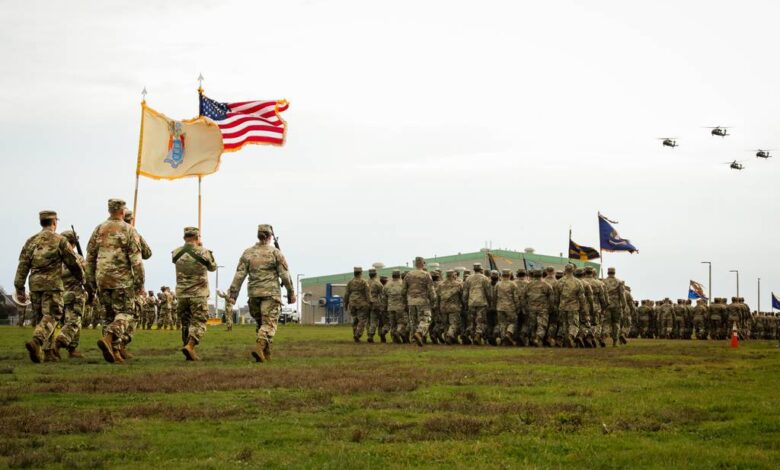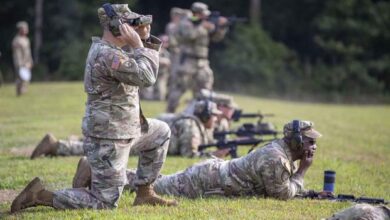Guard, reserve troops get fewer veterans disability claims approved

National Guard and reserve service members are less likely to get their veterans disability claims approved than their active-duty counterparts because of incomplete military records and inadequate oversight of their injuries, according to a new analysis from a federal watchdog.
The disparity comes even as guard and reserve members continue to take on traditional active-duty roles across a host of military deployments, bringing with them additional health risks and complications. And it could mean tens of thousands of veterans missing out on benefits even as the department expands its financial support for injured veterans in the coming years.
In a report released Monday, the Government Accountability Office found that over a 10-year span, the part-time troops’ approval rate in first-time disability claims ranged from 62% in 2012 to 77% in 2021. That lagged significantly behind active-duty troops’ approval rates, which grew from 79% in 2021 to 90% in 2021.
Researchers said the problem was not necessarily linked to fewer injuries or illnesses among reserve and guard personnel, but instead tied to less documentation of potential problems.
RELATED
:quality(70)/cloudfront-us-east-1.images.arcpublishing.com/archetype/235FPNN5WRCJDEGLJXEVKHVJTE.jpg)
“Reserve component members do not always understand the importance of immediately documenting health conditions to support any future disability compensation claims,” the report stated. “Defense Department and Veterans Affairs guidance does not address this knowledge gap. Thirteen stakeholders and several claims processors told GAO that finding evidence needed to support reserve component claims, such as service dates, is difficult.”
In order to qualify for veterans disability benefits, reserve and guard members must prove their injury or illness came as a result of an active-duty event. Researchers said the difference in approval rates was pronounced for every military service as well as for both officers and enlisted personnel.
Both Defense Department and VA officials told the watchdog that they are working on improvements, but they also acknowledged that they were “unaware of this difference” until contacted by GAO.
Those changes include new training for guard and reserve service members on veterans benefits, new guidance on recording health events and injuries while on duty, and closer tracking of the issue by VA leadership.
“We remain committed to the welfare of our service members and will continue to take steps to ensure they have the resources and knowledge to safeguard their rights and benefits,” Grier Martin, who is performing the duties of assistant secretary of defense for Manpower and Reserve Affairs, said in a statement in response to the report.
Guard and reserve personnel make up about one-third of the country’s total military end strength of more than 2 million troops.
The full report is available on the Government Accountability Office’s website.
Leo covers Congress, Veterans Affairs and the White House for Military Times. He has covered Washington, D.C. since 2004, focusing on military personnel and veterans policies. His work has earned numerous honors, including a 2009 Polk award, a 2010 National Headliner Award, the IAVA Leadership in Journalism award and the VFW News Media award.





